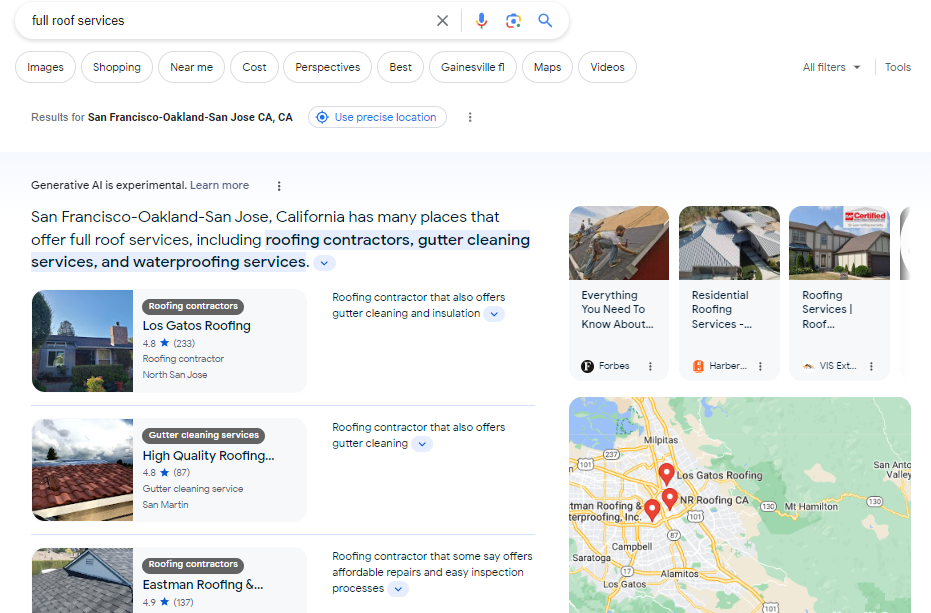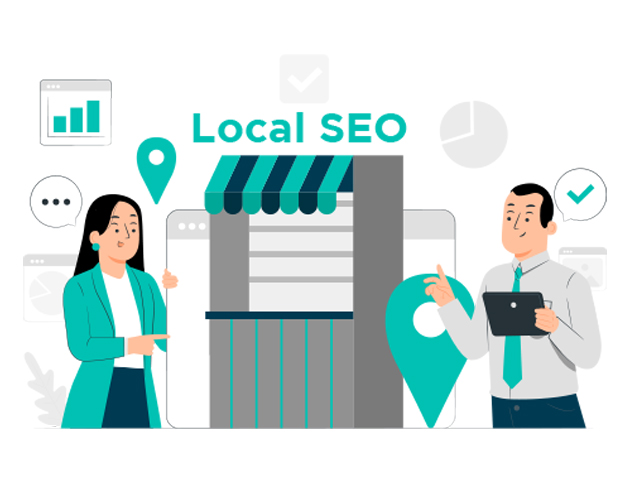Originally published on LinkedIn.
For businesses that operate across multiple locations, the challenge of maintaining a consistent yet tailored marketing strategy can be quite significant. To achieve success in marketing for such enterprises, it is crucial to strike a balance between national branding and local relevance. This can be effectively achieved through the implementation of multi-location SEO and paid advertising strategies. In this article, we will explore best practices for multi-location businesses, focusing on how to manage SEO and paid ads for optimal results.
Multi-Location SEO
Managing Google Business Profiles at Scale
Google Business Profiles play a crucial role in local SEO. For multi-location businesses, managing these profiles can be a complex task, but it is essential for ensuring that each location is accurately represented online. Here are some key strategies to consider:
- Consistency: It is important to ensure that basic information such as the business name, address, phone number (NAP), and operating hours are consistent across all locations. Any discrepancies can confuse customers and harm search rankings.
- Verification: Each location should be individually verified, as this can significantly improve local search visibility.
- Regular Updates: Keeping all information up-to-date is crucial, including temporary changes such as holiday hours.
- Reviews: Encourage customers to leave reviews and respond to them promptly. This can help boost local SEO and build trust with potential customers.
To streamline the management of multiple profiles, there are tools available that are specifically designed for enterprise-level SEO. These tools allow for bulk updates and monitoring, making the process more efficient.
Understanding National vs. Local Search Intent and Keywords
When it comes to multi-location SEO, it is important to understand the difference between national and local search intent and keywords. This understanding will enable businesses to tailor their SEO strategy to target the right audience at the right time.
- National Search Intent: This refers to broader queries about products or services that are not location-specific. When creating content targeting these keywords, it is important to focus on brand messaging and universal customer value propositions.
- Local Search Intent: This involves queries where the user’s intent is to find something within a specific geographic area. Keywords used for local search intent should include location-specific terms and satisfy local information needs.
By distinguishing between national and local search intent, businesses can optimize their SEO strategy to effectively target their desired audience.
Building Websites and Location Pages for Multi-Location Businesses
Building a website for a multi-location business requires careful organization and attention to detail in order to effectively cater to each location’s unique needs. Here are some key considerations:
- Homepage and Main Pages: The homepage and main pages should effectively communicate the overarching brand and value across all locations.
- Individual Location Pages: Each location should have its own dedicated page, optimized with local keywords, unique local content, and location-specific meta data.
- Mobile-Responsiveness: It is crucial to ensure that the website is mobile-friendly, as many local searches are conducted on mobile devices.
- Local Schema Markup: Implementing structured data markup can help search engines understand location-specific information, improving overall search visibility.
By creating dedicated pages for each location, businesses can effectively cater to local SEO and provide a personalized experience for their users.
Paid Ads for Multi-Location Businesses
Paid advertisements are a powerful tool for driving targeted traffic and increasing visibility for each location of a multi-location business. Here are some strategies to consider when implementing paid ad campaigns:
Targeting Specific Locations
- Geo-Targeting: Utilize geo-targeting in your ad campaigns to show ads to users in specific locations.
- Local Keywords: Incorporate location-based keywords into your ad campaigns to ensure relevance.
- Ad Customizers: Take advantage of ad customizers to dynamically insert location information based on where the user is searching.
Optimizing Ad Campaigns
- Separate Campaigns: Consider creating separate campaigns for each location to have greater control over budgets and targeting.
- Ad Scheduling: Tailor ad schedules to the peak business hours of each location for maximum impact.
- Local Landing Pages: Direct users to the specific location page from the ad to provide a cohesive and personalized experience.
Measuring Success
SEO Performance Metrics
- Organic Traffic: Utilize analytics tools to track the volume of organic traffic coming to your website. Segregate this data by location to identify which regions are drawing in more visitors through search engines.
- Search Engine Rankings: Regularly monitor the search engine rankings for location-specific keywords. This will help you understand how visible each location is in search results and identify areas for SEO improvement.
- Click-Through Rate (CTR): Evaluate the CTR from search results to your location pages. A low CTR might indicate that your meta titles and descriptions aren’t compelling or relevant enough to prompt clicks.
Google My Business Insights
- GMB Analytics: Google My Business provides valuable insights into how customers interact with your business listings. Pay attention to metrics such as the number of profile views, actions taken (calls, website visits, direction requests), and photo views.
- Review Analysis: Regularly assess the quantity and quality of reviews for each location. High ratings and positive feedback can boost local SEO, while negative reviews might require reputation management efforts.
Paid Advertising Metrics
- Impressions and Clicks: Track the number of impressions and clicks for your ads to assess visibility and interest. Break down these metrics by location to determine regional performance.
- Cost Per Click (CPC): Monitor the CPC to evaluate the cost-effectiveness of your ads. A high CPC might indicate a need to refine your targeting or bidding strategy.
- Conversion Rate: Measure how many clicks lead to conversions, such as form submissions, newsletter sign-ups, or transactions. Analyze conversion rates by location to see which ads are driving the most valuable actions.
Advanced Tracking Techniques
- Multi-Channel Funnels: Use tools like Google Analytics Multi-Channel Funnels to see how various marketing channels contribute to conversions. This can reveal the combined effectiveness of SEO and paid ads.
- Heatmaps: Implement heatmap tools on your location pages to see where visitors click and how they navigate your site. This can inform design and content choices to improve user experience and conversion rates.
Utilizing Reporting Tools
- Custom Dashboards: Create custom dashboards in your analytics platforms to view key performance indicators (KPIs) for each location at a glance.
- Regular Reporting: Set up regular reporting intervals to compare performance over time and keep stakeholders informed about marketing outcomes.
Conclusion
To sum it up, managing the SEO and paid ads for a multi-location business requires careful planning and strategic execution. By claiming and optimizing your Google Business Profiles, tailoring your websites and location pages, and effectively utilizing paid ads, you can achieve multi-location marketing success. We encourage you to implement these strategies and closely monitor your results. Remember, optimizing your digital marketing efforts is an ongoing process, so don’t be afraid to make adjustments along the way. Good luck on your multi-location marketing journey!
If you need assistance with implementing these strategies or want to learn more about how SocioSquares can support your digital marketing efforts, feel free to reach out to us. We’re here to help you succeed!






